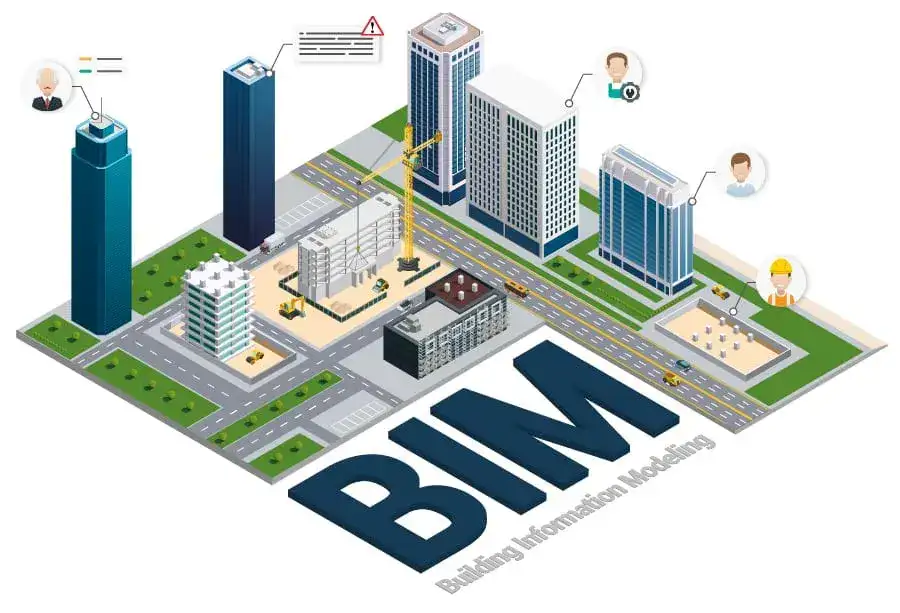Building Information Modeling (BIM) is an intelligent model system. It can process all the tasks of construction-related whether it is for planning, design, or facilities management. BIM allows for enhanced collaboration and minimizes errors that affect the construction industry, thereby allowing for greater project efficiency and cost control.
Construction deadlines are being compressed every day, with increasingly publicly available budgets, but innovation, even development, is becoming imperative. BIM in construction has become one of the most revolutionary tools in the entire modern construction process. But what exactly does this mean, and how does it change the way buildings are designed, constructed, and managed?
Understanding BIM in Construction
Building information modelling comprises a digital representation designating the relation of physical and functional features of a facility. For the construction industry, it’s not simply a 3D model. It is an intelligent data-rich process, which is considered by the best stakeholders like architects, engineers, and owners. They can work better together at all levels of a project. Through the lifecycle of a project, it keeps the collaboration going.
BIM is a living, shared resource in which real-time updates and changes can happen, unlike conventional drawings or CAD designs. Such strong coordination solves clashes among design, improves productivity, and results in less rework costs.
How BIM Is Revolutionizing the Construction Industry?
The impact of BIM in construction has a great, profound impact. Here is what this technology has done to redefine the landscape:
1. Improved Collaboration and Communication
Traditional projects are delayed and tend toward cost overruns mainly due to poor communication among stakeholders. However, centralized information in a single BIM model helps to provide real-time updates to all team members. That leads to greater transparency, which significantly reduces misunderstanding and keeps everyone on the same page.
2. Enhanced Cost Estimation
BIM plays a vital role in cost planning and forecasting. With BIM estimating services, professionals can derive precise quantity take-offs, material costs, and labor estimations straight from the model. This level of detail significantly reduces budget overruns and makes financial planning more predictable.
If you’re working with a Construction Estimating Company, having a BIM-ready model enables quicker turnaround times and far more accurate projections.
3. Efficient Project Scheduling
The use of BIM allows the project team to simulate construction sequences and visualize with 4D scheduling, thereby enabling the management team to identify potential delays in advance so that the team can prepare proactively for commencement, hence speeding up the project delivery.
4. Risk Management and Safety Planning
Safety is paramount in construction, and BIM performs the complementary function of simulating site logistics and identifying hazards concerning safety. Hazard scenarios are analyzed, access routes to the site are planned, and generalized safety procedures are developed before any work on the actual site begins.
5. Sustainability and Facility Management
BIM supports green building initiatives by enabling energy analysis and sustainability assessments early in the design phase. After construction, the model remains a valuable asset for facility management. It holds data on HVAC systems, lighting, maintenance schedules, and more, all easily accessible in one place.
Common Misconceptions About BIM
Despite its advantages, some professionals are still hesitant to adopt BIM, mainly due to misconceptions. A BIM tutor can help clear up these misunderstandings and demonstrate how even small projects can benefit from BIM implementation.
- It’s too expensive and complex. While the initial investment can be higher, the long-term cost savings and efficiency gains are substantial.
- We don’t need BIM for small projects. Even modest builds benefit from reduced errors and better coordination.
Why Now Is the Right Time to Adopt BIM?
The change of trends in construction is very fast. BIM in construction is becoming not an optional add-on; it will soon be an industry standard. The need now is for smart buildings with processes and accurate project delivery, which makes BIM a wise move for construction companies. They will ensure competitiveness in the future.
Conclusion
The construction industry is moving very fast, and it’s dangerous to stay behind. BIM in construction is becoming the most common advanced method chosen by the AEC experts. Majorly, what they need now is smart buildings with efficient processes and accurate project delivery. This makes BIM a wise move for construction companies. They will ensure competitiveness in the future. Industry innovations and those adopting BIM today will be tomorrow’s leaders. Building owners, architects, and contractors, it’s time to grab BIM with both hands.

